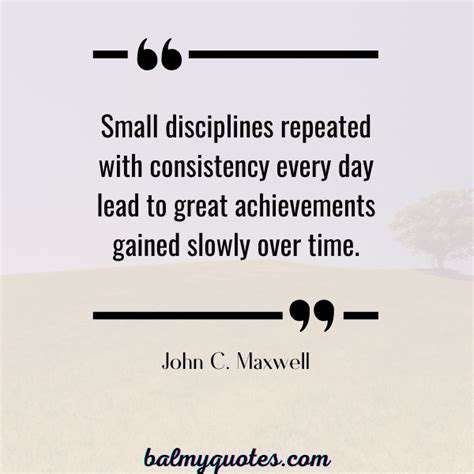Leash Pulling Solutions: Enjoy Walks with Your Dog
Identifying the Root Cause of Pulling
Understanding the Motivations Behind Pulling
Leash pulling is a common problem for dog owners, and understanding the underlying motivations is crucial for effective solutions. A dog might pull because they're excited to see other dogs or people, or because they're eager to reach a specific location. They could also be feeling anxious or frustrated, leading to pulling as a way of expressing their discomfort or trying to gain control of the situation. Recognizing these potential triggers is the first step in addressing the issue.
Sometimes, pulling is simply a learned behavior. Perhaps the dog has learned that pulling gets them what they want, whether it's a treat, a favorite toy, or access to a specific area. Identifying these patterns of reinforcement is essential for breaking the cycle of pulling.
Identifying the Signs of Pulling
Recognizing the specific signs of pulling is important for effective intervention. Does your dog pull consistently, or only in certain situations? Are there any accompanying behaviors, such as barking or lunging? Paying close attention to these subtle cues can help pinpoint the root cause of the problem and tailor your training approach.
Observing your dog's body language during walks is also key. A dog that's pulling might have a stiff posture, their ears perked, or their tail wagging excessively. All of these subtle cues can provide insight into the factors that are contributing to the pulling behavior.
Environmental Factors that Contribute to Pulling
Environmental factors can significantly influence a dog's tendency to pull on the leash. For example, a dog might pull more strongly in areas with high stimulation, such as parks filled with other dogs or people. Conversely, a dog might pull if they are bored or not getting enough exercise. Understanding how the environment affects your dog's behavior is important for creating a more positive walking experience.
Consider the presence of distractions in the dog's environment during walks. Is the route too stimulating with other dogs or people? Adjusting the walking routes to minimize these distractions can help reduce pulling episodes.
The Role of Physical Needs and Exercise
A dog's physical needs and exercise levels play a critical role in leash pulling. A dog that isn't getting enough exercise might resort to pulling as a way to release pent-up energy. Ensuring that your dog gets adequate physical and mental stimulation through activities like daily walks, playtime, and training sessions can help to reduce pulling behaviors. Insufficient exercise can lead to frustration and increased pulling.
Addressing Anxiety and Fear
Sometimes, leash pulling is a manifestation of anxiety or fear. A dog might pull to escape a situation they find uncomfortable, such as encountering another dog or a loud noise. Addressing underlying anxieties through positive reinforcement techniques, desensitization, and counter-conditioning can help to alleviate these fears and reduce pulling behaviors. It's vital to consult with a veterinarian or certified dog trainer to determine the appropriate approach.
The Importance of Positive Reinforcement
Positive reinforcement techniques are crucial for addressing leash pulling. Rewarding your dog for calm and gentle behavior on the leash, rather than punishing them for pulling, is essential for creating a positive association with walking. Using treats, praise, or toys as positive reinforcement can encourage desired behaviors and reduce the likelihood of future pulling incidents. Consistency is key in this process.
Positive reinforcement methods, including rewards for desired behaviors, create a more enjoyable and less stressful walking experience for both you and your dog. Avoid punishment, as it can create negative associations and potentially worsen the pulling problem.
Training and Leash Techniques for a Smooth Walk
Implementing appropriate training techniques and using the right leash are vital for a successful walk. Using a front-clip harness can often help reduce pulling by changing the dog's perspective on the walking direction. Consistent training with positive reinforcement, such as rewarding calm behavior with treats and praise, is crucial. Understanding your dog's body language and adjusting your approach accordingly is also essential.
Using a head halter or a front-clip harness can help redirect a dog's pulling behavior. Proper leash handling techniques, including maintaining a loose leash, are also important to avoid reinforcing pulling.
Using Rewards and Consistency for Success

Motivating Behavior Change
Implementing consistent reward systems is crucial for successfully motivating behavior change. Reward systems provide positive reinforcement, encouraging individuals to repeat desired actions. This positive reinforcement loop creates a powerful incentive for sustained effort. By associating specific behaviors with positive outcomes, you can cultivate a strong foundation for long-term changes. Reward systems, when properly structured, can be highly effective tools for shaping habits and achieving personal goals. This approach is particularly effective when combined with a clear understanding of the target behaviors and desired outcomes. The key is to design rewards that are meaningful and motivating to the individual.
Consistency in applying rewards is equally important. Inconsistency undermines the effectiveness of the system, potentially leading to confusion and frustration. Establishing a predictable schedule and delivering rewards reliably builds trust and reinforces the desired behavior. This predictable structure allows the individual to anticipate the positive outcome, which further motivates them to continue the desired actions. This predictable nature of the reward system is essential for fostering a sense of control and creating lasting positive change.
Creating a Supportive Environment
A supportive environment plays a critical role in fostering long-term behavioral change, complementing the rewards system. Encouraging positive habits and discouraging negative ones can be fostered through a supportive environment. Creating this environment can involve seeking feedback from trusted individuals who can offer constructive criticism. Encouragement and support from peers can significantly impact the individual's willingness to persevere through challenges.
A supportive environment also includes minimizing potential obstacles to the desired behavior. Recognizing and addressing potential challenges early on can significantly improve the chances of success. This might involve removing distractions, providing necessary resources, or adjusting the environment to facilitate the desired actions. This proactive approach to minimizing obstacles can significantly increase the likelihood of success.
Furthermore, open communication is essential for fostering a supportive environment. Individuals should feel comfortable discussing their struggles and successes with others. This creates a sense of shared responsibility and encourages mutual support. This open communication is a cornerstone of effective support systems.
Understanding Individual Needs
Tailoring rewards and consistency approaches to individual needs is paramount for maximizing effectiveness. Different individuals respond to different types of rewards. Some might be motivated by tangible rewards like money or gifts, while others might prefer non-tangible rewards such as recognition or praise. Understanding these individual preferences is crucial for crafting a reward system that truly resonates with the person aiming for behavioral change.
Consideration of personal preferences and motivations is essential to build a reward system that is intrinsically motivating. Understanding what drives the individual will allow the rewards to be more effective in shaping their behavior, ultimately leading to more successful outcomes. A reward that is not aligned with the individual's needs or values may be ineffective or even counterproductive.
Tracking Progress and Adjusting as Needed
Regularly tracking progress is essential for ensuring the reward system remains effective and relevant to the individual's needs. This involves monitoring the frequency of the desired behaviors and evaluating the impact of the rewards. Tracking progress allows for identification of areas where adjustments might be needed. This iterative process ensures that the strategies remain aligned with current circumstances and individual progress.
Regular reviews of the reward system and its impact on the individual are crucial to ensure its continued effectiveness. Adapting the approach based on the observed progress and feedback is key to maintaining motivation and achieving desired outcomes. This flexibility allows the reward system to evolve as the individual's needs and circumstances change. A rigid approach is unlikely to yield long-term positive change.

Read more about Leash Pulling Solutions: Enjoy Walks with Your Dog
Hot Recommendations
- Best Pet Bowls: Stainless Steel and Ceramic
- Pet Hydration: Why It's Crucial
- Stop Counter Surfing: Training Your Dog to Stay Off
- Pet Hypothyroidism: Symptoms and Management
- Signs of Pet Liver Disease: What to Watch For
- Pet Emergency Kits: What to Pack
- Dangers of Xylitol: Toxic to Dogs
- Dealing with Pet Diarrhea: When to See a Vet
- Preparing Pets for Travel: Tips for a Smooth Trip
- Pet Depression: Recognizing the Signs











